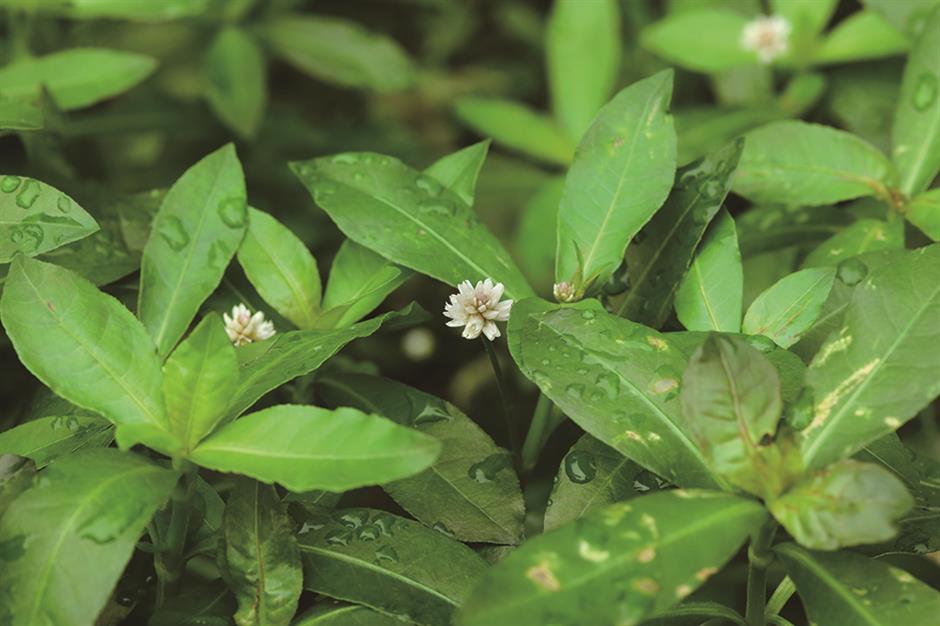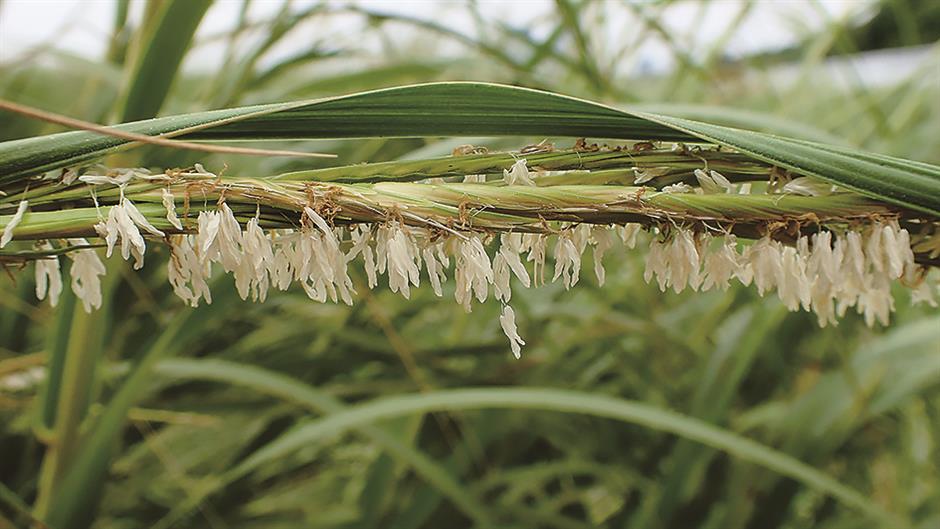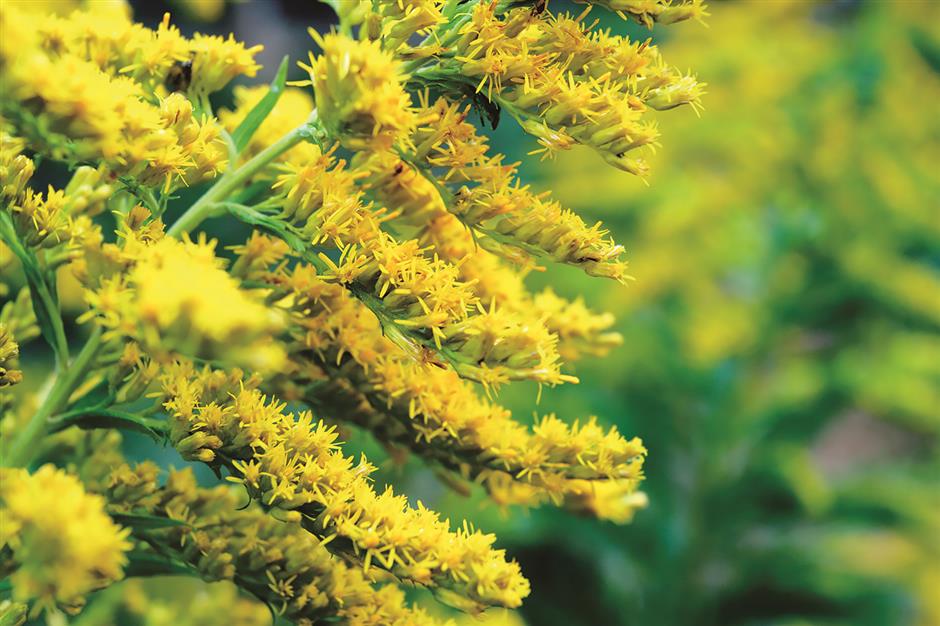Invaders: Not all plants are pretty

Shanghai has taken a lot of efforts to remove water hyacinth from the waterways throughout the year. Picture shows hyacinth on the Huangpu River in the winter of 2015.
When walking along some waterways in Shanghai, including the Huangpu River and Suzhou Creek, one may encounter a large field of green plant life covering the water surface.
The aggressive invader is water hyacinth (Eichhoria crassipes), known as shuihulu (water calabash) in Chinese. Native to South America, the free-floating perennial has traveled around the world, originally as an ornamental plant, covering ponds and rivers like a thick mat that can cause oxygen depletion and kill the fish.
Shanghai has taken a lot of efforts to remove water hyacinth from the waterways throughout the year. In Jinshan District alone, more than 6,700 tons of water hyacinth were reportedly cleared at 26 locations from November 23 to 30.
In October, large patches of water hyacinth burst out on the Huangpu River and water maintenance workers went all out to clear the river.
The plant harms other plant and animal species, clogs rivers and causes pollution when it dies and sinks to the bottom.
The aggressive invader made its way to China in the 1960s to 1970s, said Qin Xiangkun, botanist and researcher with Shanghai Natural History Museum. It was promoted primarily as pig feed.
And in the old days, water hyacinth wasn’t a cheap plant because it required greenhouses to survive the cold winter. In spring, it was sold to farmers to grow as feedstuff.
“Back then, the winter in Shanghai was very cold and water hyacinth couldn’t survive the iced-up water, so it wasn’t a threat to the local environment,” Qin said.
“As the weather gets warmer and the rivers no longer freeze in winter, the water hyacinth can now survive the cold season on its own and flourish in spring, pushing aside the local plant species.”
Also, mixed feedstuff became common and the demand for water hyacinth as animal feed also dropped significantly.
The introduced aquatic plant that made contributions to China’s aquaculture industries is now officially an invasive species and a threat to biodiversity that requires constant monitoring and management.
In the past four years, at least 2,500 tons a year of the invader have been removed from the Suzhou Creek waterways, peaking at 34,500 tons in 2015.
“Basically, the water hyacinth cannot be eliminated other than fishing them up,” said Qin, adding that using herbicides has its double edges. “If they can kill the invasive species, they could also harm the indigenous ones, so they must be used cautiously and prudently.”
Other invaders
On September 11, 2017, the Shanghai Wildlife Conservation Management Station and the Shanghai Wildlife Conservation Association classified six invasive plant species in Shanghai.
Alligatorweed (Alternanthera philoxeroides) is similar to the water hyacinth. Also native to South America, it was popularized in China in the 1950s as feedstuff and spread quickly not only in water, but also on land. It’s considered a threat to the ecosystem because it harms vegetation, animals and water.

Alligatorweed
Smooth cordgrass (Spartina alterniflora Loisel) once choked the Dongtan wetland on Chongming Island. The grass, introduced in the 1970s to protect and expand tidal zones, turned into a horrifying enemy of the local flora and fauna.
Its hardy roots adapt to different environments, and not long after it established along coastal China from the Yalu River estuary in the north to Guangdong Province in the south, it started crowding out indigenous plant species and damaging bird-feeding grounds.
It topped the list of China’s first invasive species list in 2003.

Smooth cordgrass
Shanghai has been researching on ways to control the cordgrass since 2002 under a project funded by the Shanghai Agricultural Commission.
The project later involved Fudan University, East China Normal University and the National Natural Science Foundation.
In 2007, the coordinated cordgrass management project, a six-phase plan combining physical and biological tools, was approved. It began in September 2013 and after 40 months and billions of yuan, the project proved successful with a 95 percent control rate. Canada goldenrod (Solidago canadensis) is a common invasive weed. The tall grass with small yellow flowers can survive and tolerate a variety of habitats, so it’s mostly seen in wasteland and abandoned construction sites.

Canada goldenrod
The line between alien and invasive species, though, is not entirely explicit.
“Invasive species are those that cannot be contained and controlled and which pose threats to other plant species and biodiversity in the new environment,” noted Qin.
“One should not mix the terms of alien plants and invasive plants.”
When plants arrive in a new place, the factors such as rainfall, temperature and humidity are different, so it’s not easy for them to grow and expand independently.
Technically, about 10 percent of alien plants could survive naturally in a new environment, and 10 percent of those could become invasive species that impact the local biodiversity.
The invaders are usually brought in through human activity, either intentionally or accidentally.
“In my opinion, only the alien plants that thrive and impact the local environment can be called invasive species, so the number is not that high,” said Qin.
But the invaders are enemies of the local environment, crowding out other species. “Once the control measures loosen up a little bit, the resurgence can happen again in the turn of a hand,” Qin said.
















